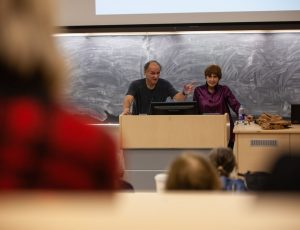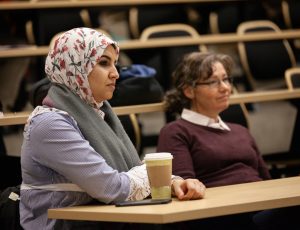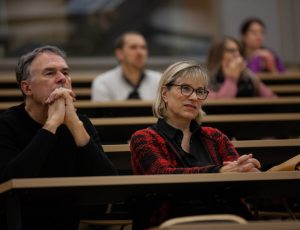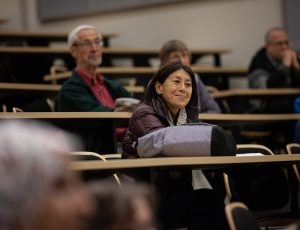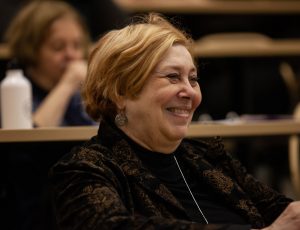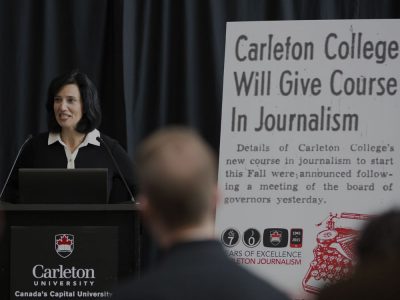By Tyrone Burke
Photos by Fangliang Xu
It was a pivotal moment in Leonardo da Vinci’s life. In April 1476, a 24-year-old Leonardo was brought before the Office of the Night to answer for his “sins.” If that scenario sounds foreboding, it’s because it was.
During the Renaissance, Italian cities established vice squads to suppress homosexual activity. Florence’s Office of the Night was one of them, and they had charged Leonardo with “wickedness” – a euphemism for sodomy. The Office of the Night offered a financial reward to Florentines who turned in their fellow citizens. Leonardo and three other men had been accused by Jacopo Saltarelli, a goldsmith’s apprentice who claimed to have been a sexual partner of all four.
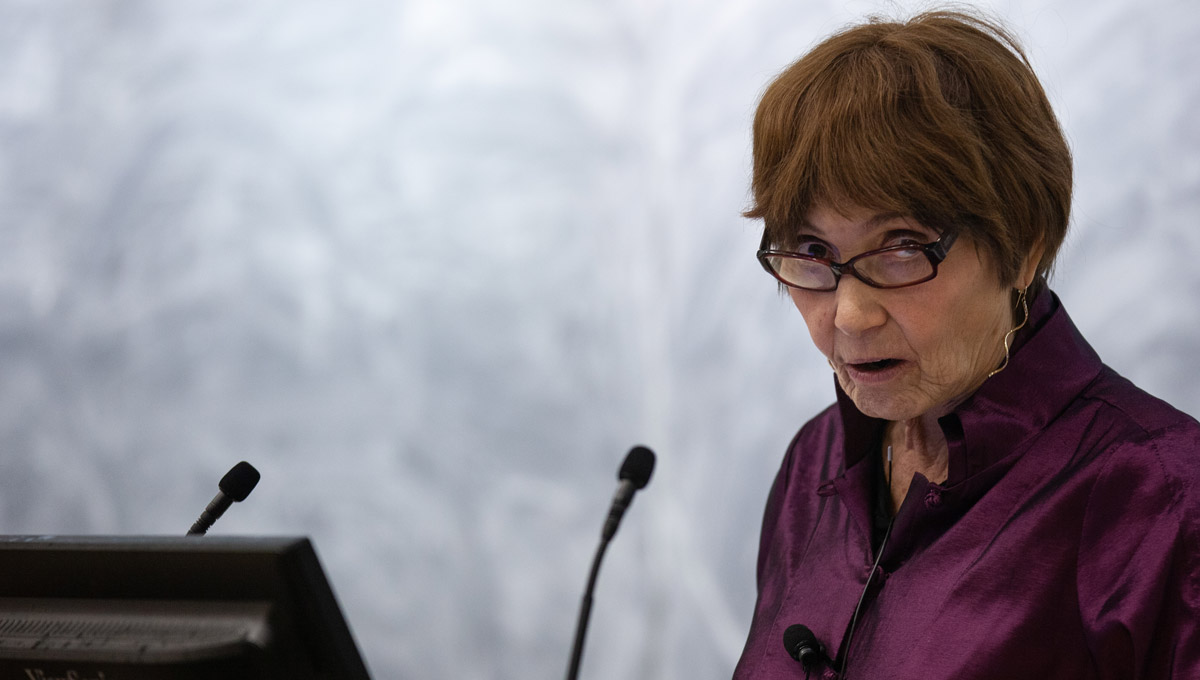
Elizabeth Abbott
Leonardo was imprisoned for a few hours, and his legal status was in limbo for about two months. But Elizabeth Abbott argues that the experience shaped his sexual life in lasting ways.
“Those were the two worst months of his life,” says Abbott, a senior research associate at the University of Toronto’s Trinity College.
Abbott delivered a lecture on Leonardo’s celibacy as part of Cinquecento, a year-long celebration of his life and work that Carleton University is staging on the 500th anniversary of his death.
A Life Lived in Danger of Punishment
“Leonardo lived in real danger of punishment,” she says. “The accusation would have been public, and went to gossip, slander and speculation that tormented Leonardo for years afterwards.”
The author of A History of Celibacy notes that while Leonardo showed great appreciation for male beauty and would likely consider himself to be gay by today’s terminology, the concept of homosexuality as a sexual identity did not exist in Renaissance Italy.
Over the next 40 years of his life, he lived in cities where homosexual activity was policed, but he was never again accused. Abbott points to Leonardo’s fear of the mental degeneration caused by syphilis and a revulsion for orifices and sexual penetration that she observes in his art as being additional factors that would have contributed to a choice to be celibate.
“What lesson did he learn from his accusation?” she asks.
“Most likely that he should not conduct himself in a way that might provoke a similar nightmare. From then on, at the slightest hint of impropriety, he would protest he was being victimized, attacked, maligned and insulted. He would vigorously insist on his childlike innocence of all wrongdoing. After the Saltarelli affair, he intended to be the world’s most cautious man.”
A Nuanced Exploration of Leonardo’s Life and Work
Cinquecento’s year-long exploration of da Vinci enables a nuanced exploration of his life and work. November is another busy month. On Nov. 4, Italy’s Gruppo Jobel will perform SmarTalk Leonardo da Vinci, which brings Leonardo’s work to life through performance art. The University of Ottawa’s Cristina Perissinotto will deliver a lecture on Renaissance polymaths on Nov. 15, and this year’s Gerhard Herzberg lecture will feature a lecture on Salvator Mundi – Leonardo’s missing masterpiece — by Martin Kemp, a leading da Vinci scholar and emeritus professor of the history of art at Oxford University.
“We’re the only university in the world that’s devoted an entire year to Leonardo,” says Angelo Mingarelli, chair of Cinquecento and a professor in Carleton’s School of Mathematics and Statistics.
“Other universities and museums devote only a few months. It helps puts Carleton on the map.”
Learn more about Cinquecento at: Carleton.ca/leonardo2019.
Thursday, October 31, 2019 in Arts and Social Sciences, Faculty of Science
Share: Twitter, Facebook

